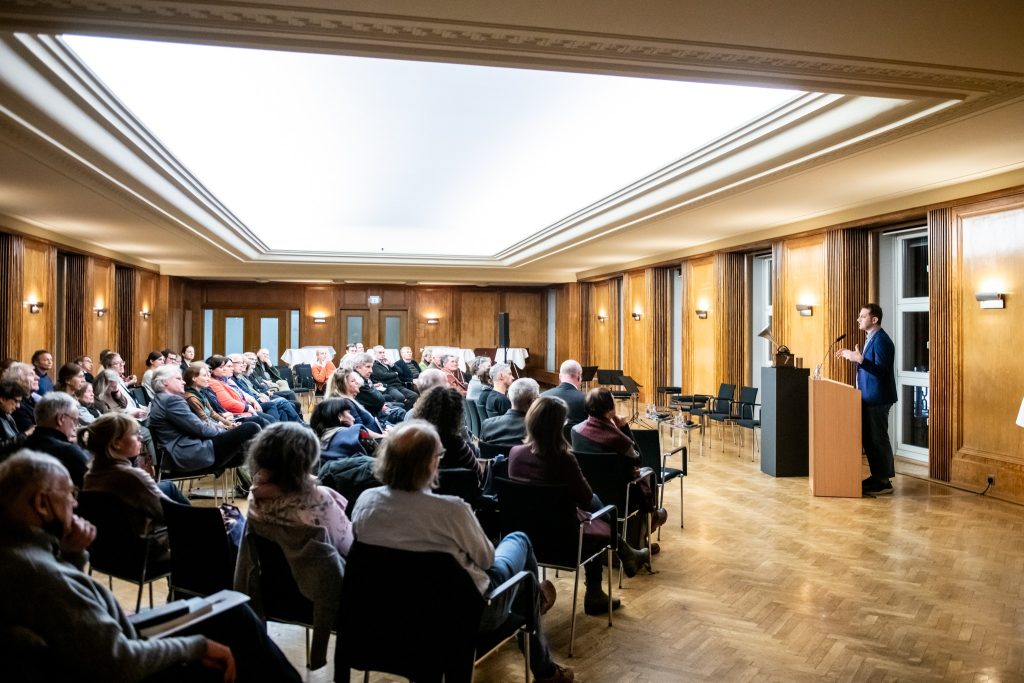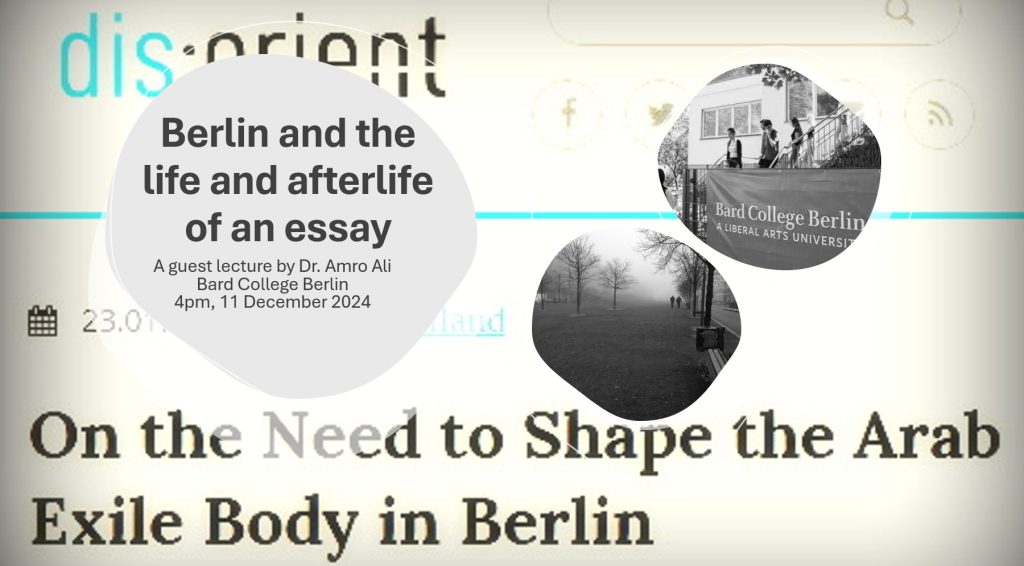By Amro Ali:
In early 2007, while still a student at the ANU, I received a call from my younger relative in Alexandria, Egypt. Her words: “Are you on Facebook?”
Little did I know, some four years later, social media tools like Facebook would help drive passionate anti-government protests in a country that had been struggling to suppress politicised social media and its outcome on the streets of Cairo’s Tahrir (Liberation) Square and other cities in Egypt.
On 6 June 2010, my neighbour in Egypt Khalid Saeed was brutally killed at the hands of police, a tragedy about which I had written last year entitled “Egypt’s Collusion course with History”. In the wake of his death, his symbolism as martyr for anti-government sentiment flourished with the creation of the “We are all Khalid Saeed” Facebook group page whose members grew into the hundreds of thousands. Saeed’s symbolism was powerful; like the Iranian shot dead, Saeed was Egypt’s Neda Agha Soltan.
The Saeed Facebook page became a lightning rod for petitions, grievances, flash protests and civil disobedience updates. While the protests were suppressed, the anger festered, and Egyptians increasingly became united in the view that the Hosni Mubarak regime must go. The inevitable ticking time bomb was now a number of months, rather than years. That explosion went off on 25 January 2011. What the protests organisers, and much of the world, did not foresee, that westwards, a young man in a small Tunisian town would self-immolate sparking an uprising that would galvanise Tunisians and herald the first so-called Twitter revolution.
The Egyptian authorities have been struggling to confront the tidal wave of a social media driven uprising. They were never geared to deal with a faceless, horizontal resistance. The decentralized protest movement has frustrated the security forces, the idea of top-down authority is taken out on the streets in which the security forces look for the same sort of structure in the protester movement. Indeed cyber activists have been arrested and tortured in the past, but with time, wills have hardened and wits sharpened, as the youth have come to realise that fear should no longer be a barrier and that freedom will come at a price.
To appreciate the impact of digital technologies on a developing country like Egypt, consider this: Whilst accompanying my uncle on his regular charity visits to the lower socio-economic areas of Alexandria in 2004, we entered a household where we were warmly greeted by a young mother of three. Despite her limited schooling, I was stunned at how much she knew about Australia. The answer lay in pirated satellite dishes that straddled the cracking rooftops of Egyptian cities, relaying stations from Al Jazeera to National Geographic into the living rooms.
Egyptians from cab drivers to barbers are aware of the world, but deteriorating economic conditions keep them occupied daily scraping a living under the Mubarak regime’s feared shadow. A little knowledge is a dangerous thing, and if an Egyptian could correctly name me Canberra as Australia’s capital, rather than Sydney, then Mubarak was in big trouble.
It would be a colossal error to suggest that Saeed and social media caused the present upheaval. Egypt’s mass uprising is the grand coalescence of 30 years of political, economic and social stagnation. On regular visits to Egypt, I was able to compare and contrast snapshots of its downward spiral. The gap between rich and poor ever widening, economic liberalisation programs bringing little benefits, rising unemployment rate, the doors to emigration shut as the West tightened its door in the post-911 climate and the Gulf Arab states sought to replace expatriates with their nationals. To exacerbate an already dire situation, corruption became so entrenched, that to remove corruption from Egypt would be like removing casinos from the State of Nevada. A parallel economy had evolved. Not merit but wasta (connection) became the key to opportunity. Young Egypt who have only known Mubarak all their lives were angry, but tech-savvy as well.
The traditional social space for a hyper-social society like Egypt’s was the coffeehouse, but over the past decade internet cafes grew as a rival. Some places physically merged the two, where you could smoke sheesha and surf the net. Six years ago, social networking sites like Friendster, Myspace and the aging mIRC were the popular choice. Whenever I asked the Egyptian male youth what they spent most doing on the internet, it was often job hunting and girl hunting. This of course is the Egypt that is experiencing 34 percent youth unemployment in a region where two-thirds of the population is under 24, and marriage is becoming ever more delayed.
You could certainly see the outcome of social networking sites on the streets, Western women (sometimes older) married to/or in a relationship with younger Egyptian men. Egypt’s thriving tourism industry was no longer the single bastion of cross-cultural unions. Nonetheless, this was of no consequence to the regime. An overt political dimension had not been taken up as yet.
In 2004, there was an estimated 250 social protests, most dealing with rising food prices. A watershed moment came when the movement Kafeya (Enough) burst onto the scene, in which they demanded that Mubarak had ruled long enough and it was time for him to go. It was an exciting prospect, but my observation was that it seemed limited to university students who were out of touch with Egypt’s masses. Social media had not fully matured to the level that could facilitate an effective form of civic activism.
This is not to overstate the impact of social media. Internet usage in Egypt is comparatively low, according to the World Bank, in 2008, Egypt’s internet usage stood at 16.6 percent. Yet given the majority of users are based in the gravity centres of Cairo and Alexandria, it would naturally be cause for concern to the authorities.
When Facebook opened its membership to those outside the confines of universities in late 2006, I gradually received more and more “add requests” from relatives and friends in Egypt. My newsfeed became an anecdotal barometer of (urban) Egyptian public opinion. At first, it showed the occasional comedy clip or results of a quiz. Then slowly the newsfeed of Egyptians took on an anti-authority dimension, as a carousel of anti-Mubarak parodies, jokes, articles, and defiance filled up the screen.
Egypt’s first political Facebook group came in the form of the April 6 Youth Movement. It was intended to support a workers strike at the industrial town of El-Mahalla El-Kubra on 6 April 2008, in which the authorities had threatened to charge the plant’s workers. The activists used blogs, Facebook, Twitter, YouTube and Flickr to coordinate and inform of their activities. I had arrived in Egypt on 11 April, and the country was abuzz about what had happened five days earlier. In hindsight, this event, and ensuing follow-ups of protests and police responses, would be an unintended dress rehearsal for the recent crisis.
Fast-forward to 2011, a coalition emerged between Kefeya, April 6 Youth Movement, We Are All Khalid Said Movement, and the National Association for Change. With Saeed’s ghost looming large and a nation reeling from the shock horror of the Alexandria church bombing, 25 January was chosen as the Day of Anger, which is also the National Police Day, a public holiday that celebrates Egypt’s police. The irony was not lost on anyone. The protesters were about to send a strong message to the regime’s police state. The Facebook page was established, and the numbers joining up skyrocketed. The cities of Cairo, Alexandria, Ismailia and Suez were to be coordinated via Facebook, Twitter, text messaging, and the timeless word of mouth.
Egyptians were further emboldened when lightweight Tunisia, a county that journalist Paul McGeough described as “the mouse that roared”, broke the psychological barrier that an Arab leader can never be removed from office unless they die; but now they can be sent on a one way ticket to Saudi Arabia. The joke in Egypt was that exiled Tunisian president Zine El Abidine Ben Ali should make a stopover in Cairo and pick up Mubarak on his way.
While denial might not be a river in Egypt, it is so for the regime. Mubarak’s misreading of the public anger in light of the protests and the follow-up cosmetic changes baffled observers. When the regime encountered imaginative bankruptcy, they shut down much of the internet on 27 January, an unprecedented move in the technology’s history. This act may have backfired; Egyptians who could not access the net, had one major less reason to stay home and the incentive to go out and protest was greater. For the activists, they resorted to old school methods such as faxes and dialup. The horse had already bolted.
The Egyptian revolution was taking place in the social media age which threw open the gates to influences of various kinds. Twitter blocked? No problems, Google unveils a twitter feed by phone service. For supporters of the anti-Mubarak protesters living abroad, Facebook and Twitter had became a command and control centre. Information gleaned from Al Jazeera, Facebook, Twitter, was relayed to protesters on the ground via phone and text messaging. This included where medical supplies were needed in Tahrir Sqaure (it’s a very big square!), ways of accessing free international dialup connections, and just the international engagement played a part in keeping up the protesters momentum. Egypt’s State TV struggled to maintain the regime’s line against the “menacing” YouTube and blanket Al Jazeera coverage. Tunisia had happened too quickly for global citizens to participate, but Egypt gave the world time and opportunity to experiment in a global civic engagement to support the Egyptian people.
Egypt has not been exposed to the current intense and prolonged global media coverage since the 1973 Arab-Israeli war. Following the 1978 Camp David Accords and the 1981 Anwar Sadat assassination, Egypt dropped significantly off the world radar. Its headlines for the next three decades were as “inspirational” as Mubarak’s charisma. That included terrorist attacks, sectarian tensions, earthquakes, rigged elections, but on the positive, the world could be assured that a “new” mummy would be discovered every six months. Such events rarely spanned more than two days coverage. Under Mubarak it has been stable, at least by Middle Eastern standards, but repressive nonetheless, the president’s mediocrity and lack of vision brought upon the nation a cultural paralysis. Books and documentaries on modern Egypt dwindled, while Ancient Egypt always remained the mainstay.
Revolutions capture the human imagination and intoxicates the viewer, seeing millions of Egyptians run and protest in Tahrir Square and beyond gave a sense of empowerment to those around the world who, for whatever reason, felt they can make a contribution via their social media space. Egypt’s mystery and place in the popular arts were amplified by the digital world. Amusingly, political cartoonists worldwide had a field day making Mubarak look like the soon to fall pharaoh, tumbling down a pyramid, his cracking face on a sphinx, to walk like an Egyptian; many which made their way to become profile pictures on Facebook. It must have been more fun than drawing the Tunisian president.
The digital revolution altered the rules of engagement in a dramatic way. Whatever Mubarak’s fate may be, there has been a parametric shift in the ways Egyptians express political dissent and mobilise the masses. Social media was not responsible for the uprising, it facilitated it and kept unleashing upon it a new lease of life. Momentum took care of the rest. Tunisia and Egypt have become inadvertent pioneers in how 20th century antiquated autocracies face off 21st century digital revolutionaries. The voice of the Egyptian people through social media has spoken: “Mubarak, let my people go”.
This article was published on online opinion






